Early Spring 2025 Snapshots From Extension’s Pollinator Paradise Garden
go.ncsu.edu/readext?1074019
en Español / em Português
El inglés es el idioma de control de esta página. En la medida en que haya algún conflicto entre la traducción al inglés y la traducción, el inglés prevalece.
Al hacer clic en el enlace de traducción se activa un servicio de traducción gratuito para convertir la página al español. Al igual que con cualquier traducción por Internet, la conversión no es sensible al contexto y puede que no traduzca el texto en su significado original. NC State Extension no garantiza la exactitud del texto traducido. Por favor, tenga en cuenta que algunas aplicaciones y/o servicios pueden no funcionar como se espera cuando se traducen.
Português
Inglês é o idioma de controle desta página. Na medida que haja algum conflito entre o texto original em Inglês e a tradução, o Inglês prevalece.
Ao clicar no link de tradução, um serviço gratuito de tradução será ativado para converter a página para o Português. Como em qualquer tradução pela internet, a conversão não é sensivel ao contexto e pode não ocorrer a tradução para o significado orginal. O serviço de Extensão da Carolina do Norte (NC State Extension) não garante a exatidão do texto traduzido. Por favor, observe que algumas funções ou serviços podem não funcionar como esperado após a tradução.
English
English is the controlling language of this page. To the extent there is any conflict between the English text and the translation, English controls.
Clicking on the translation link activates a free translation service to convert the page to Spanish. As with any Internet translation, the conversion is not context-sensitive and may not translate the text to its original meaning. NC State Extension does not guarantee the accuracy of the translated text. Please note that some applications and/or services may not function as expected when translated.
Collapse ▲In late 2008, I planted a demonstration pollinator garden at Chatham Mills to provide forage from early spring to late fall for pollinators such as honey bees, native bees, butterflies, flower flies, hummingbirds, beetles, and other beneficial insects. The garden features over 225 unique species of perennials, 85% of which are native to North Carolina. The garden is a great teaching tool that I use to conduct workshops and tours for hundreds of folks each year. It has taught me so much and I enjoy sharing this knowledge with others. Below you can see photos of the pollinator garden from early April through mid-May.
Click here for links to all the seasonal photo collections
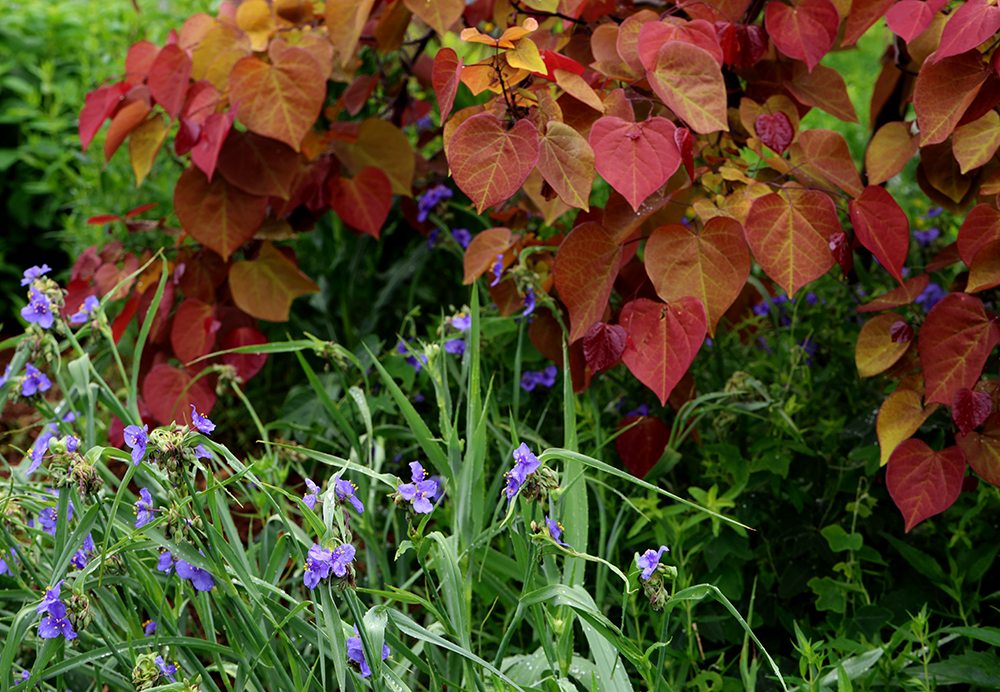
‘Flamethrower’ redbud with spiderwort. Photo by Debbie Roos.
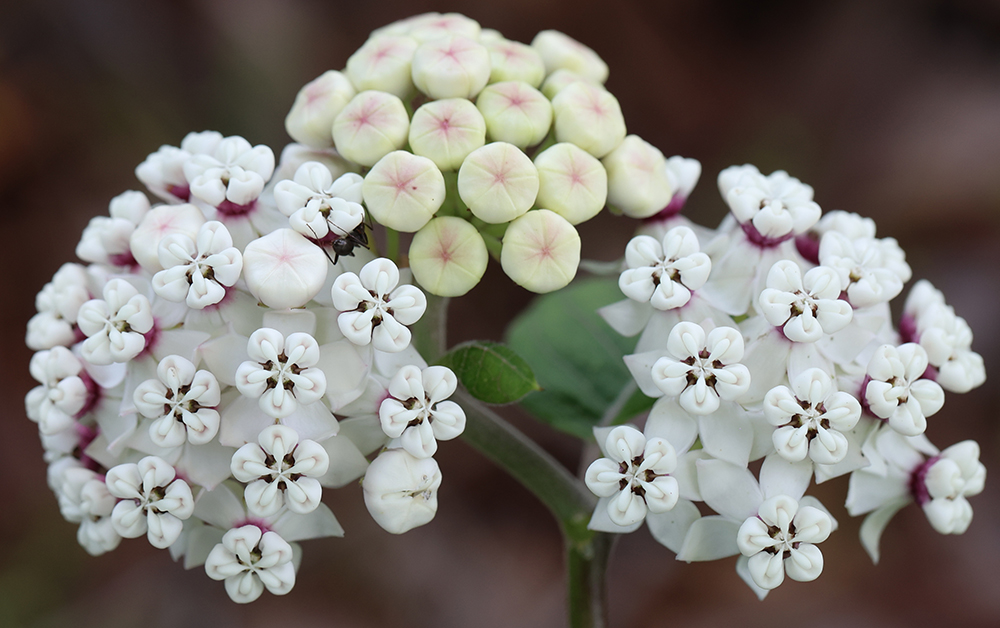
Redring milkweed (Asclepias variegata). Photo by Debbie Roos.
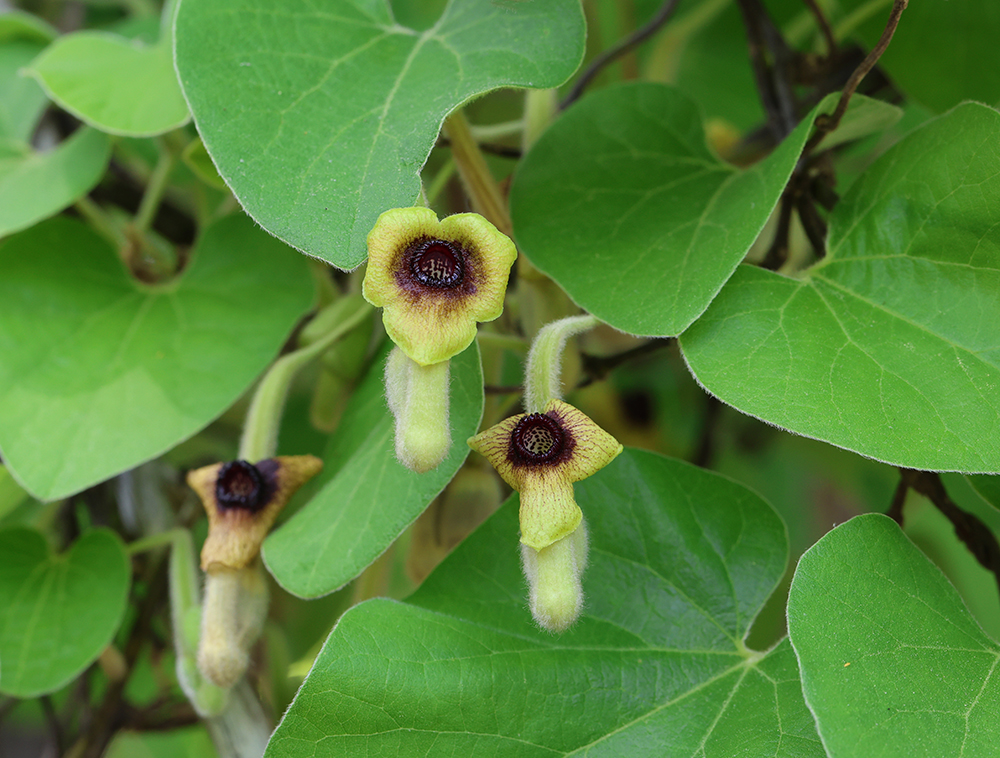
Dutchman’s pipe, also called pipevine (Aristolochia tomentosa). Photo by Debbie Roos.
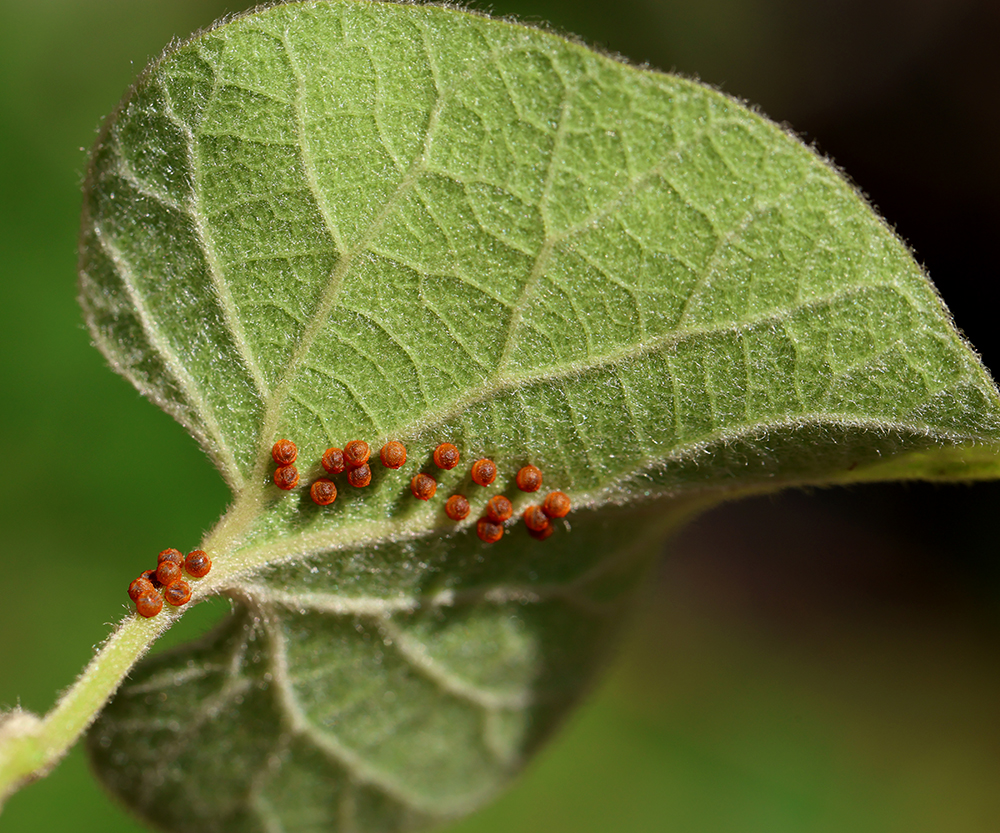
Pipevine swallowtail eggs on pipevine. Photo by Debbie Roos.
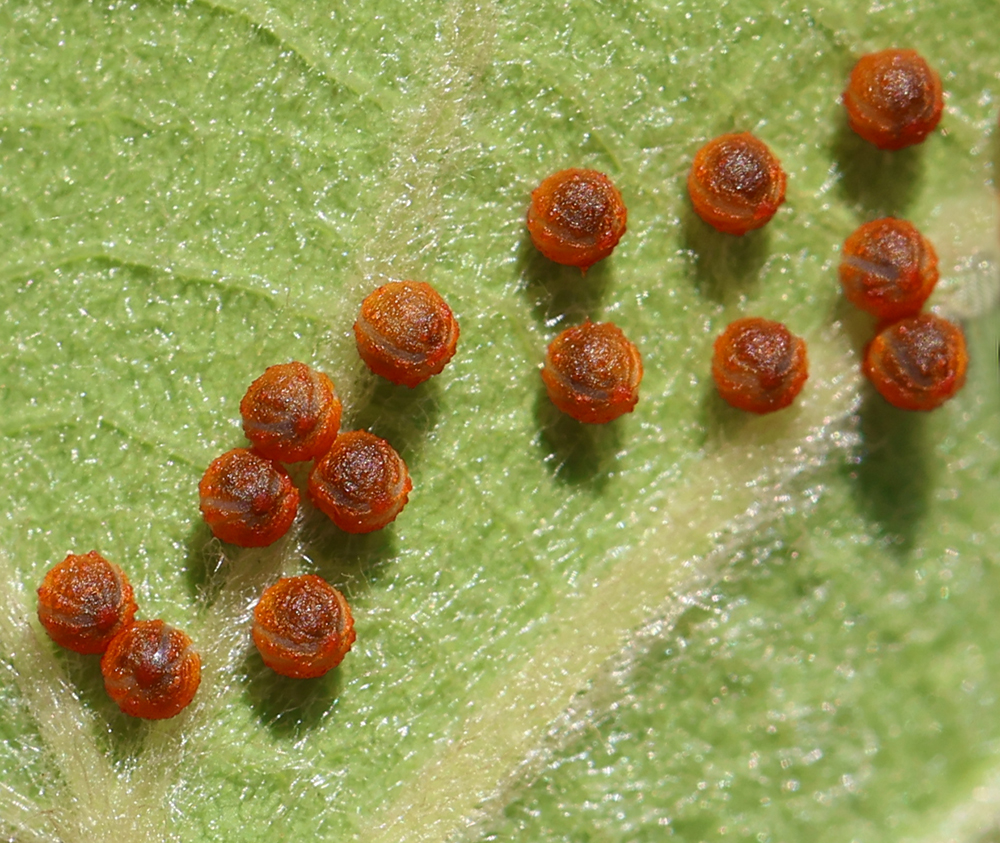
Pipevine swallowtail eggs on pipevine. Photo by Debbie Roos.
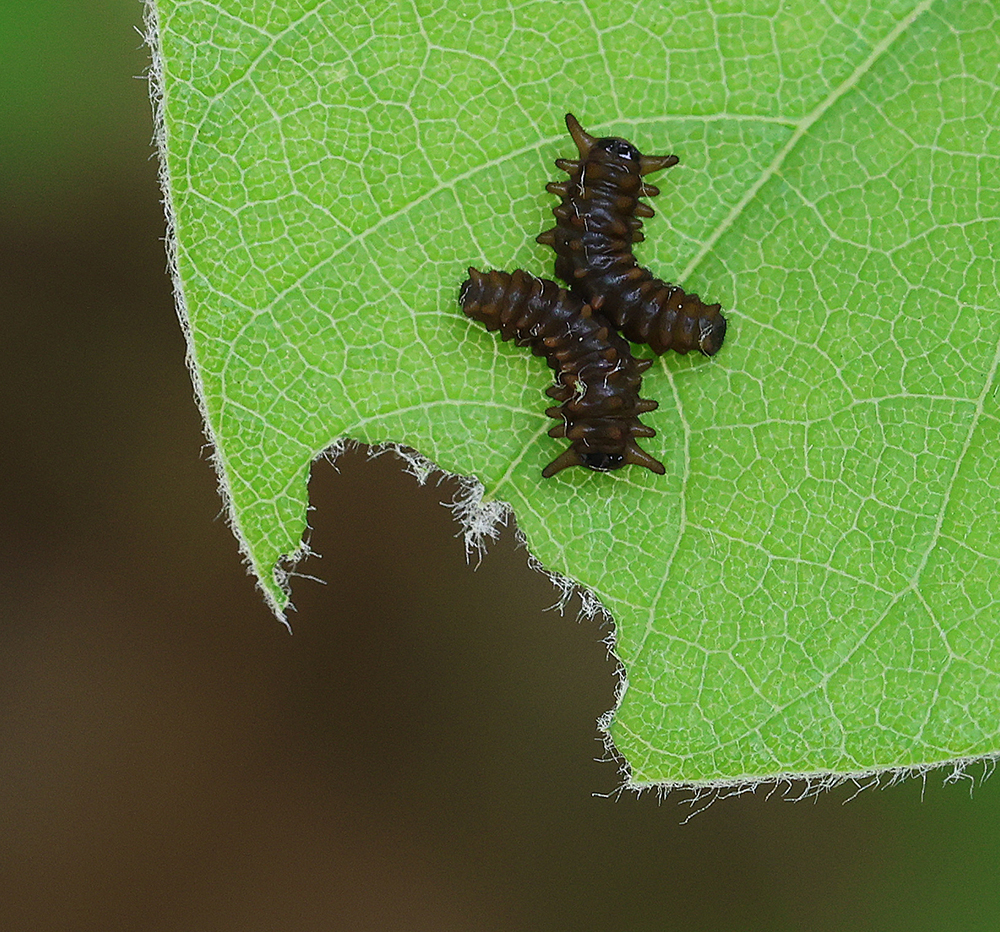
Newly hatched first instar pipevine swallowtail caterpillars. Photo by Debbie Roos.
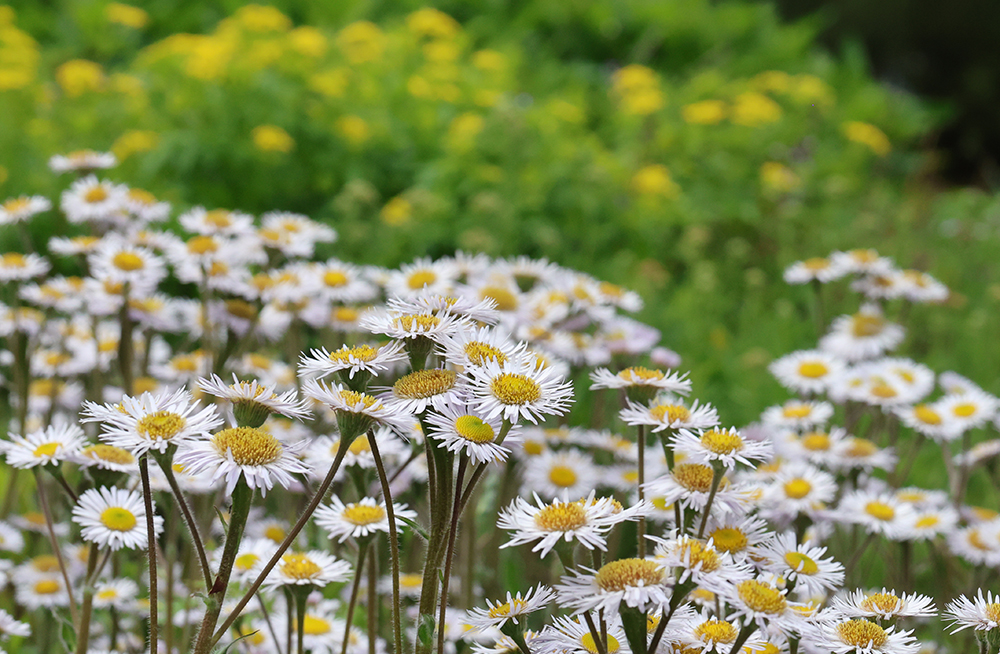
Robin’s plantain (Erigeron pulchellus) in the foreground with golden alexander (Zizia aurea) in the background. Photo by Debbie Roos.
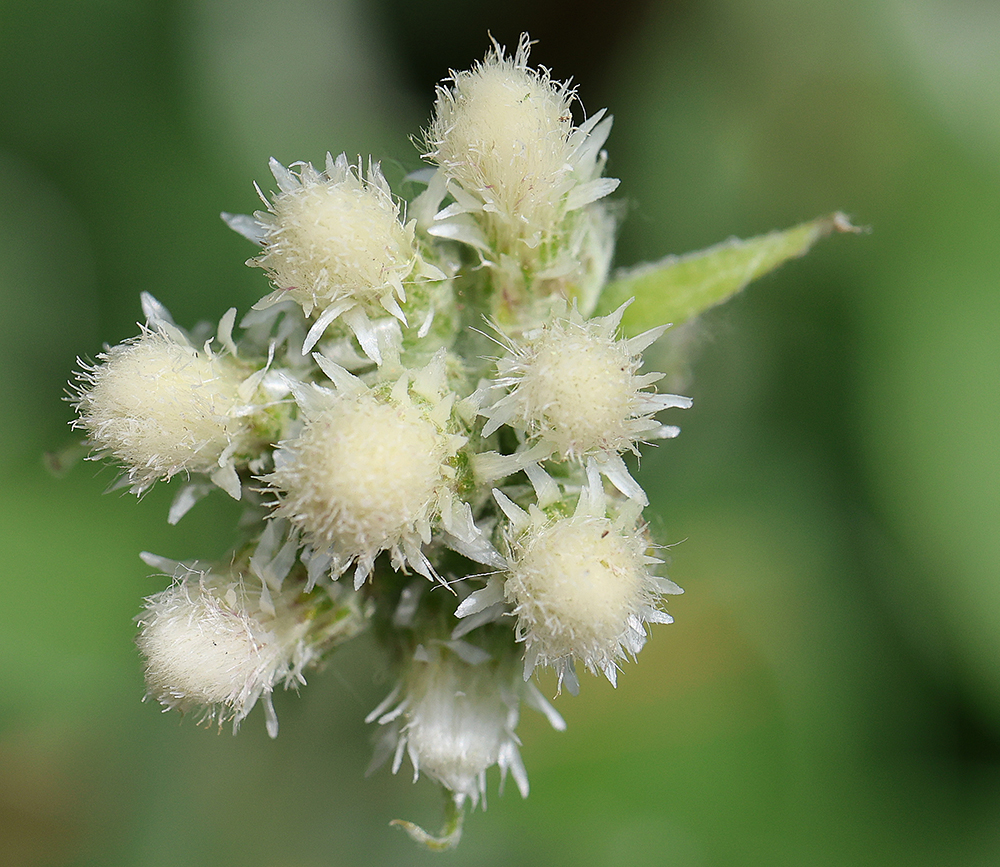
Unusual blooms of pussytoes (Antennaria plantaginifolia), a native groundcover. Photo by Debbie Roos.
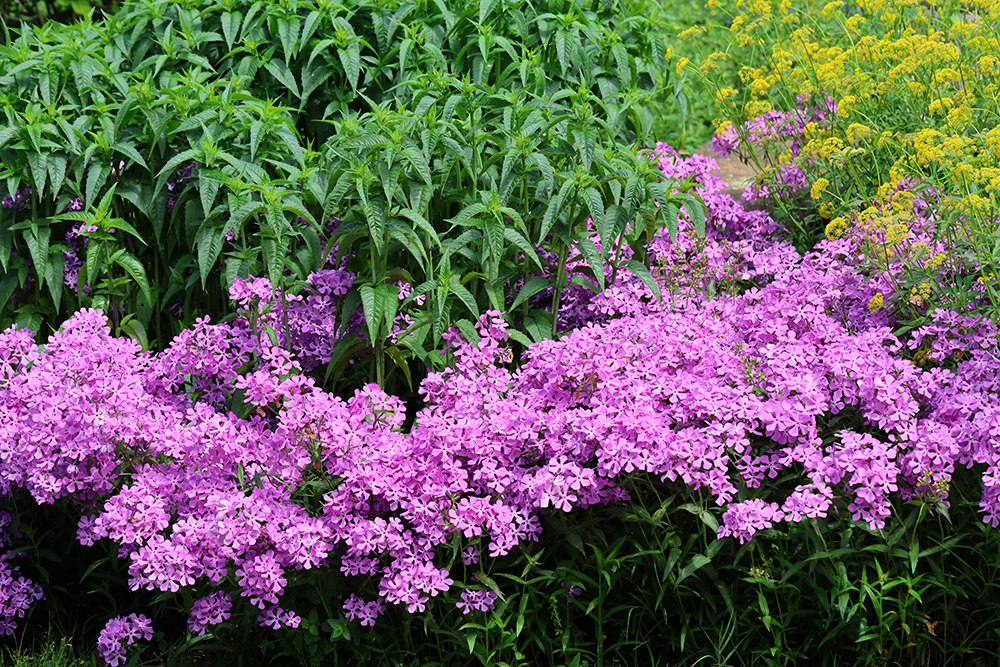
Bee balm (not yet blooming), downy phlox (Phlox pilosa), and golden alexander (Zizia aurea). Photo by Debbie Roos.
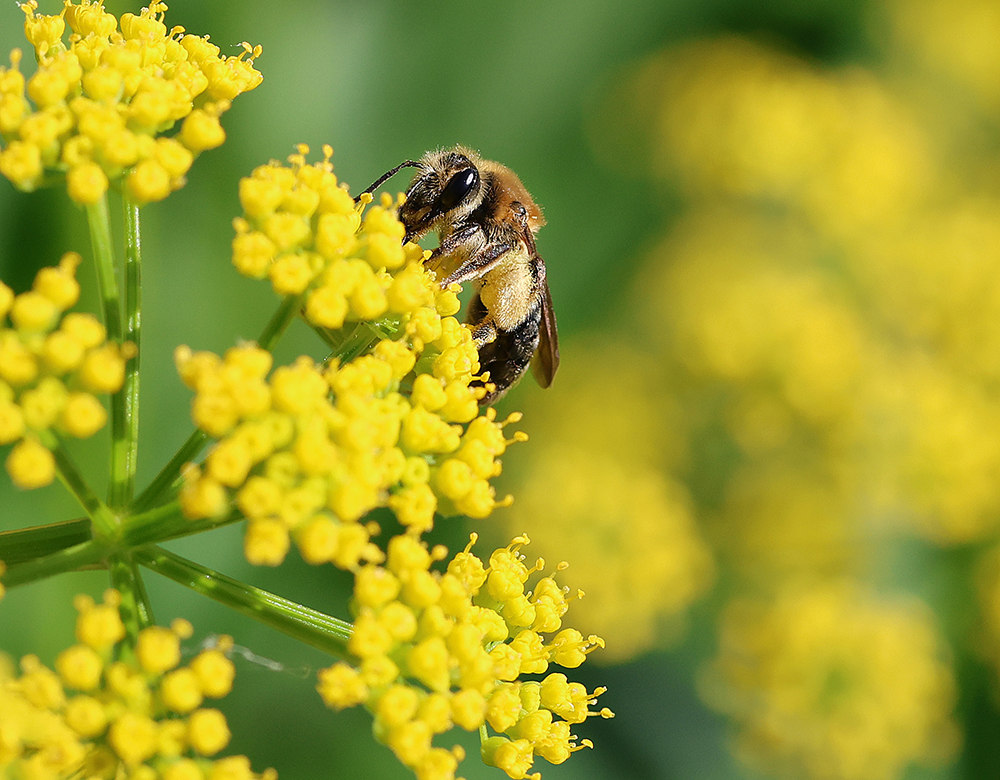
Mining bee on golden alexander. Photo by Debbie Roos.
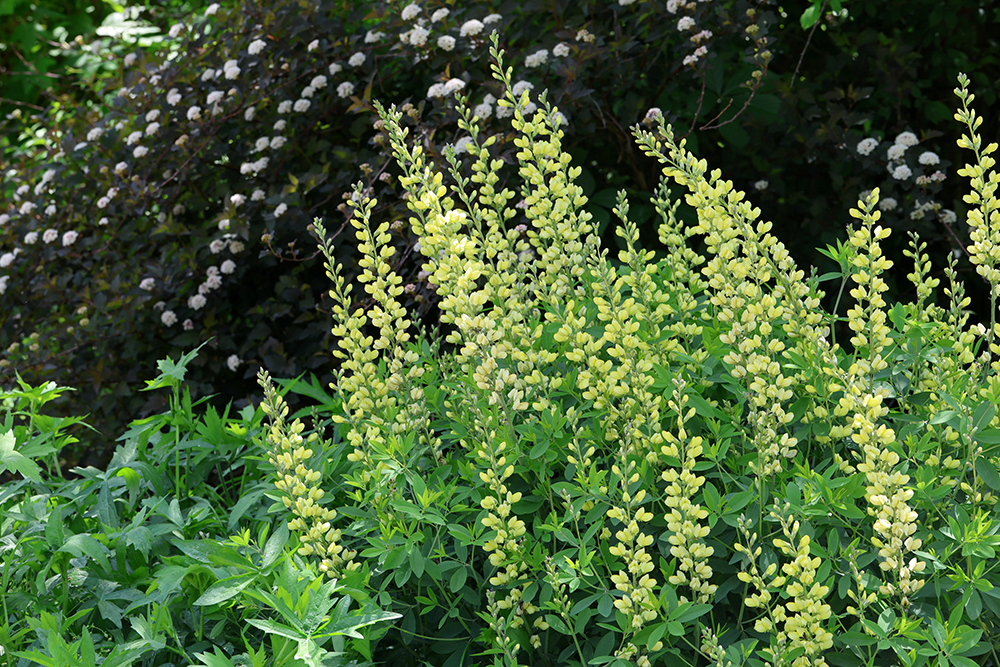
‘Carolina Moonlight’ wild indigo (Baptisia x ‘ Carolina Moonlight’). Photo by Debbie Roos.

Leafcutter bee on wild indigo. Photo by Debbie Roos.
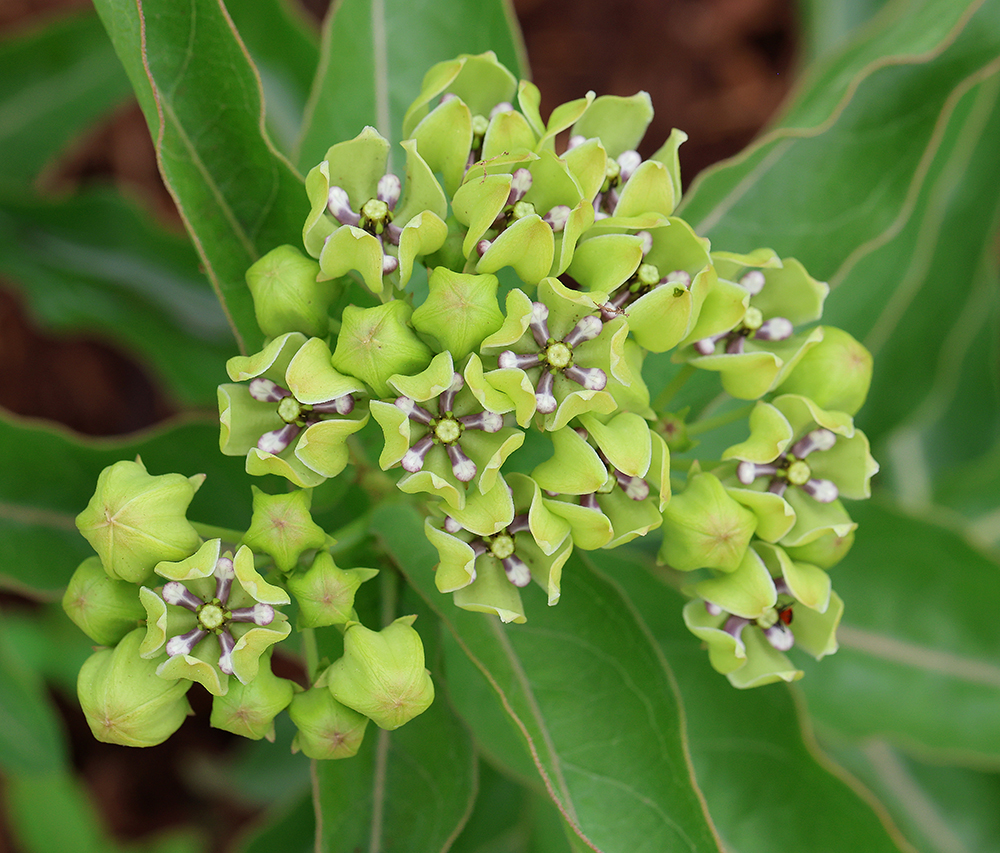
Green milkweed (Asclepias viridis). Photo by Debbie Roos.

Virginia sweetspire (Itea virginica). Photo by Debbie Roos.
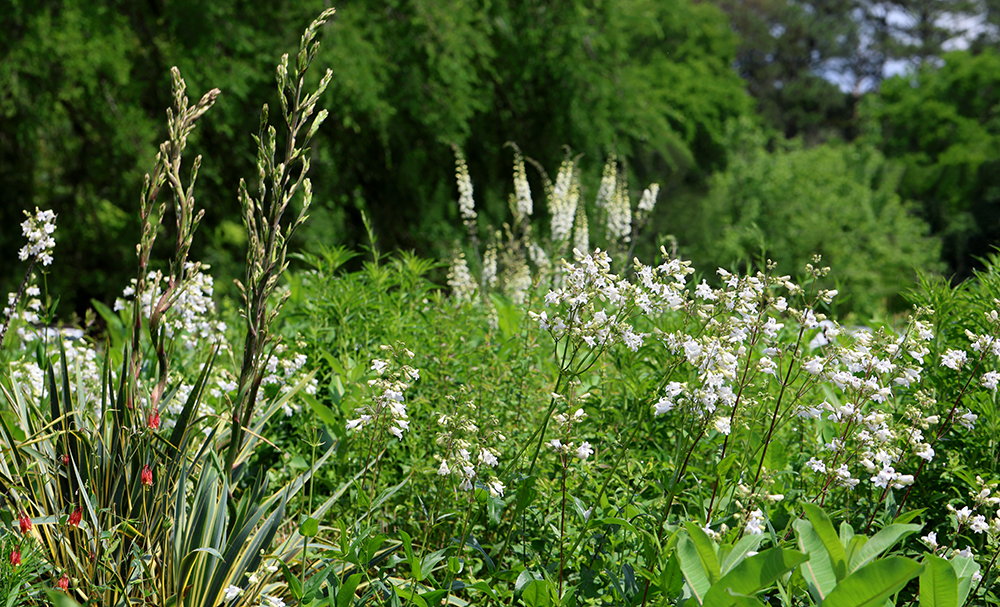
Wild indigo with calico beardtongue, and very soon the yucca will unfurl its dramatic blooms. The columbine provides a splash of red. Photo by Debbie Roos.
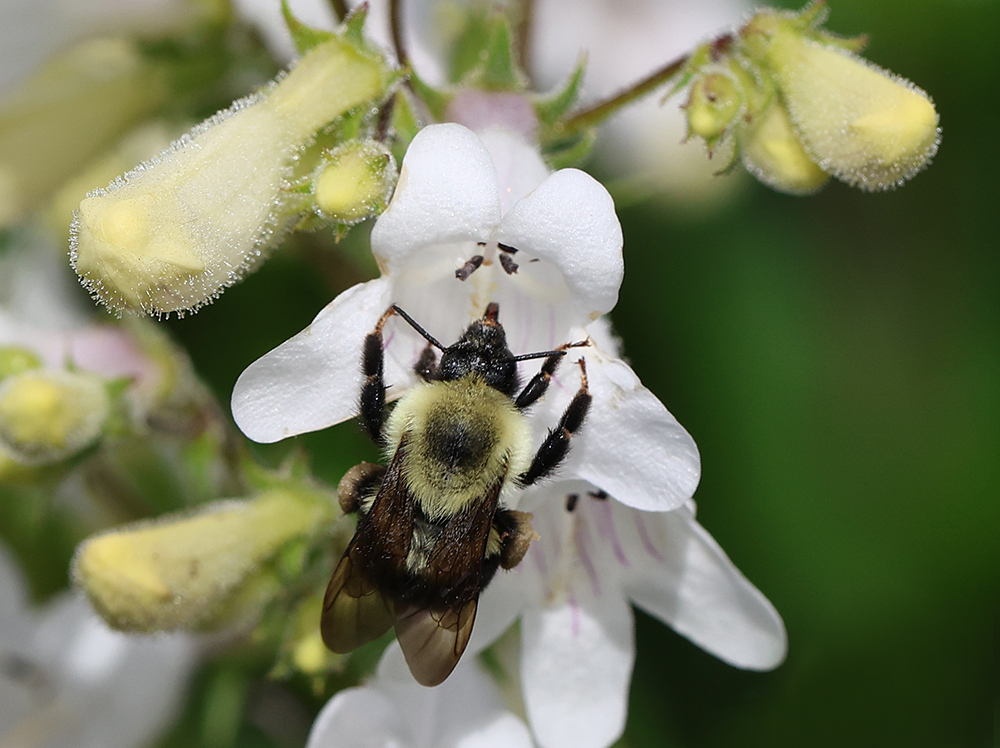
Bumble bee on calico beardtongue (Penstemon calycosus). Photo by Debbie Roos.

Late instar pipevine swallowtail caterpillar on the Dutchman’s pipe. Photo by Debbie Roos.
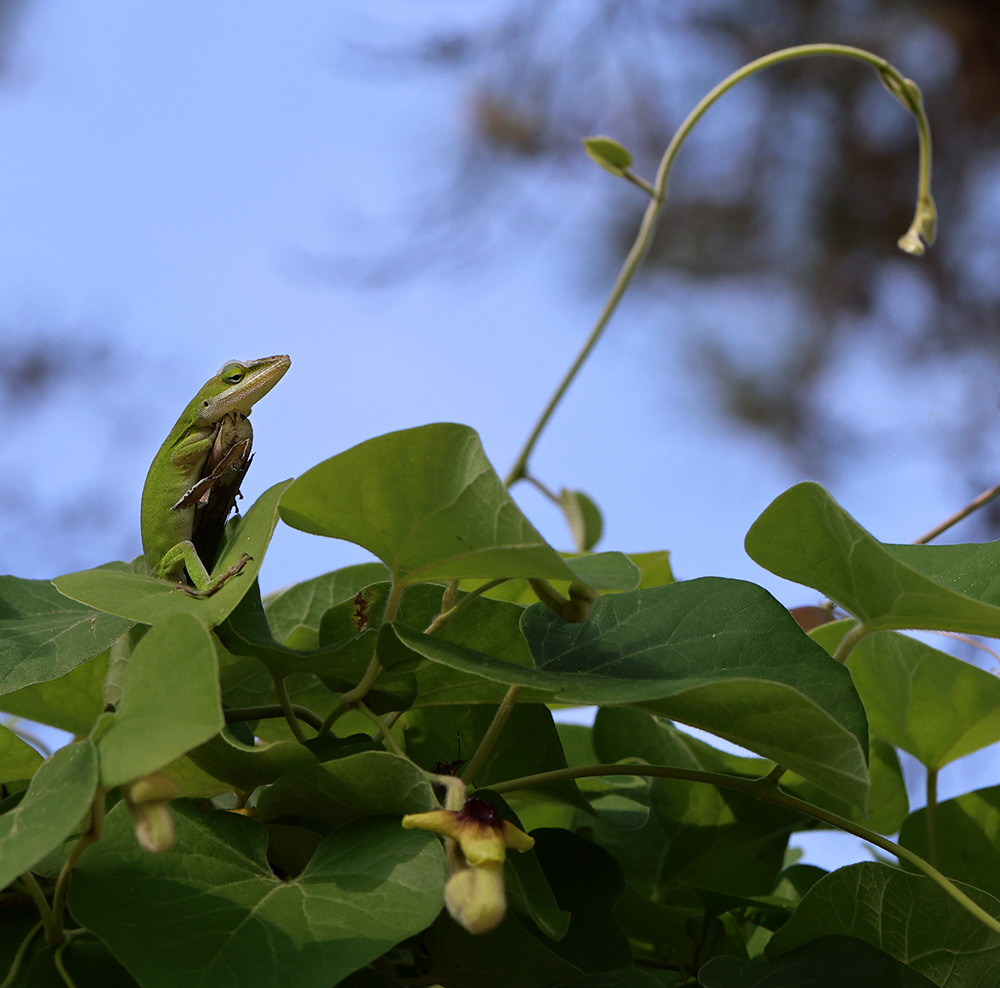
Carolina anole hunting on wooly Dutchman’s pipe. Photo by Debbie Roos.
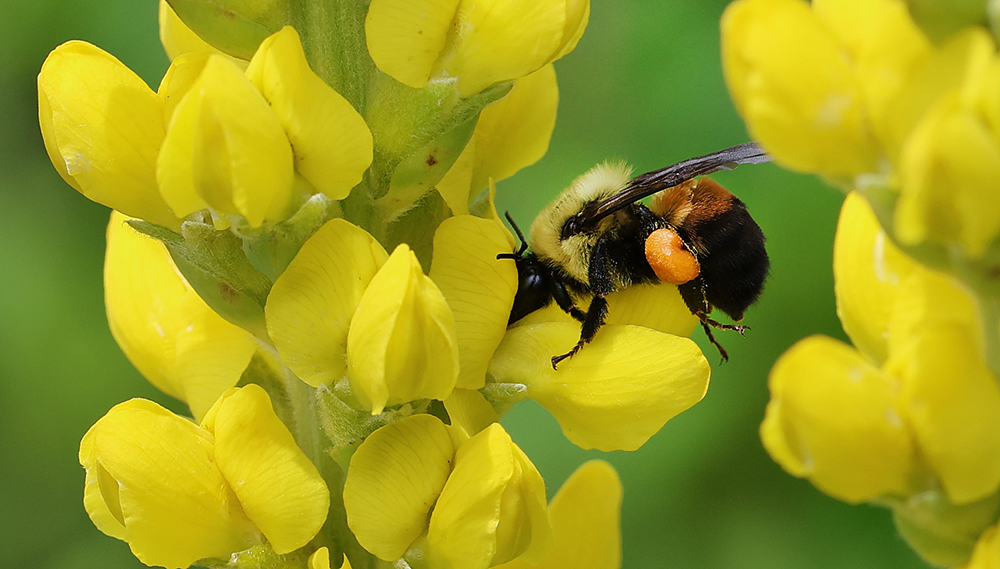
Brown-belted bumble bee foraging on Carolina lupine (Thermopsis villosa). Photo by Debbie Roos.
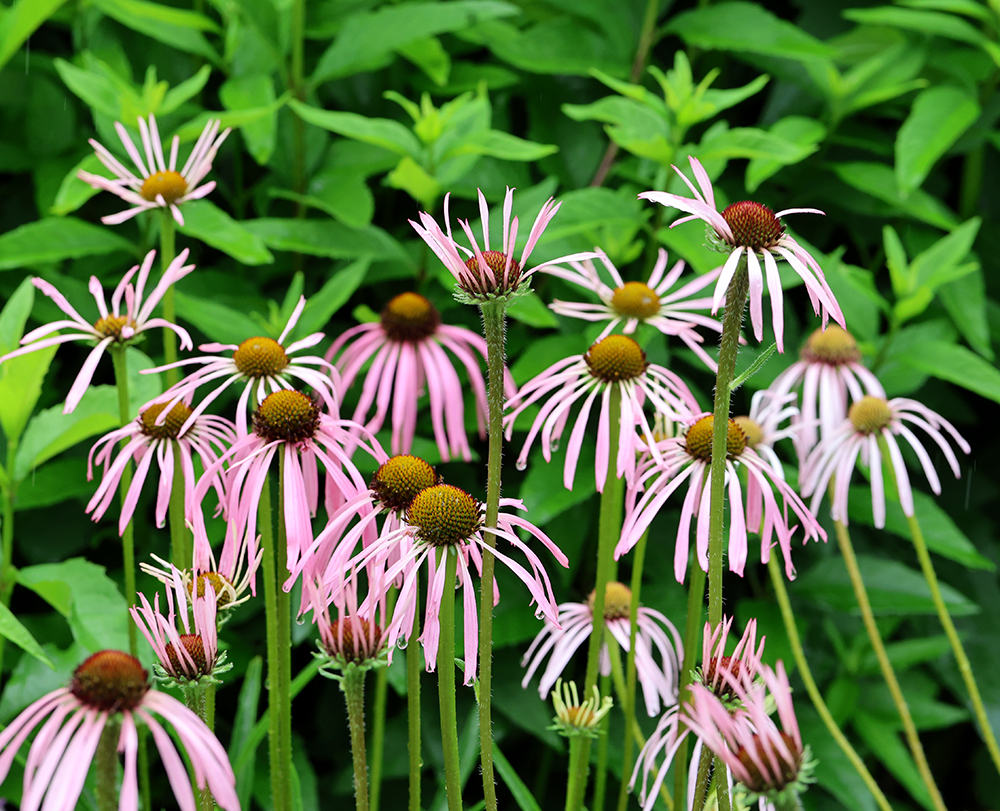
Pale purple coneflower (Echinacea pallida). Photo by Debbie Roos.

Rain-soaked curlyheads (Clematis ochroleuca). Photo by Debbie Roos.
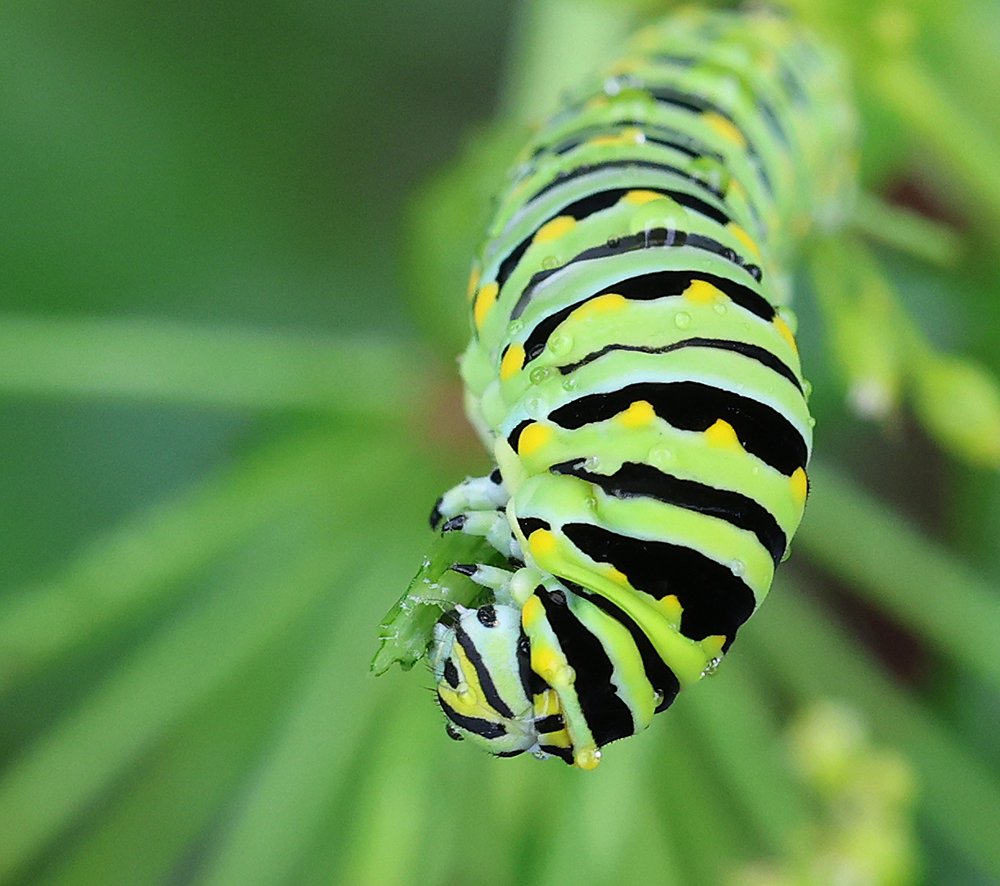
Black swallowtail caterpillar feeding on golden alexander. Photo by Debbie Roos.
For more information:
Pollinator Paradise Garden website
What’s in Bloom in the Pollinator Garden – updated bi-weekly!


